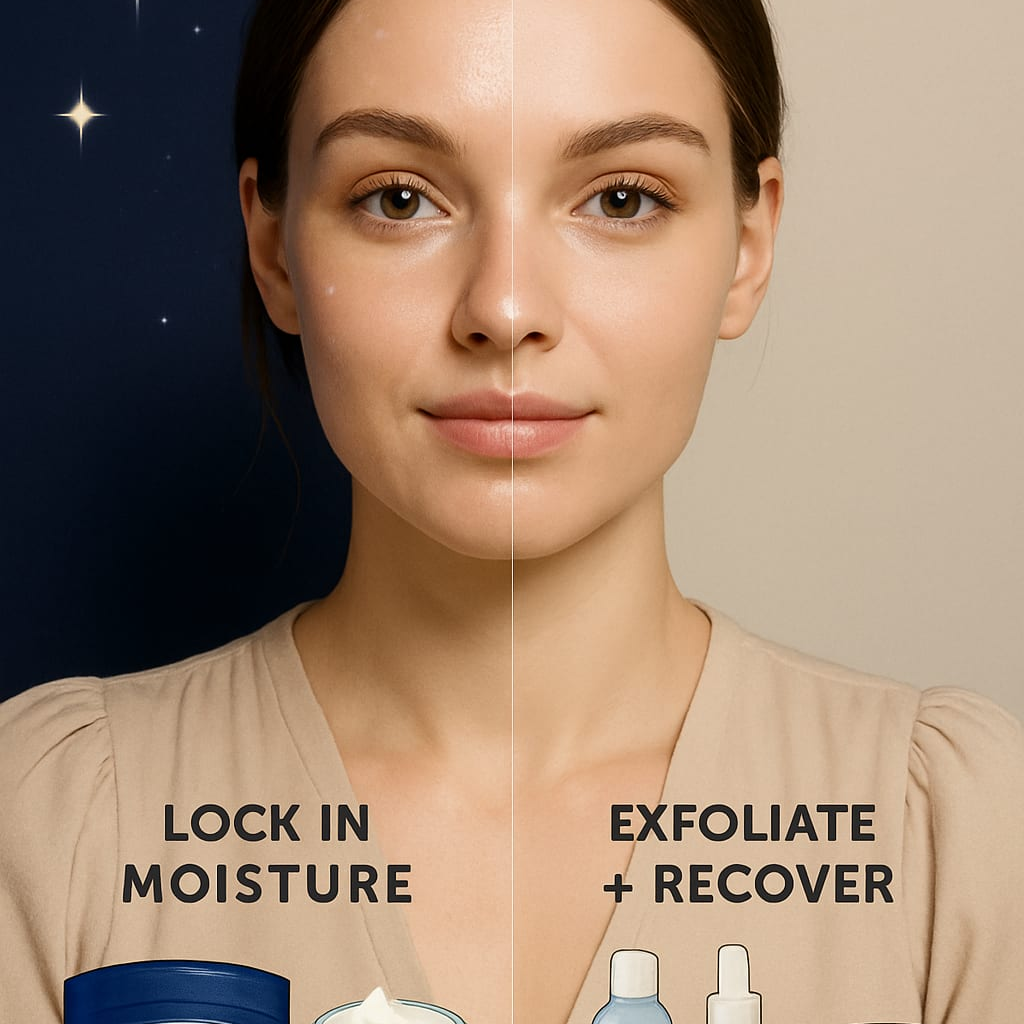Slugging and skin cycling are two skincare trends that have exploded in popularity across social media platforms, with dermatologists, influencers, and beauty enthusiasts all swearing by their benefits. While both trends promise improved skin texture, hydration, and long-term skin health, they are not universally ideal for every skin type. Understanding what these routines entail and evaluating how they interact with your unique skin concerns can make the difference between radiant skin and unwanted breakouts. This guide breaks down both methods and helps you determine if either—or both—deserve a place in your nighttime skincare routine.
What Is Slugging?
Slugging involves applying a thick, occlusive layer—usually petrolatum-based like Vaseline or Aquaphor—at the end of your nighttime skincare routine to lock in moisture. The goal is to prevent transepidermal water loss (TEWL), especially during sleep when your skin is most prone to dehydration. By forming a protective barrier, slugging allows the serums and moisturizers underneath to penetrate more effectively and reduces environmental exposure.
Benefits of Slugging
The key advantage of slugging is deep hydration. It’s particularly beneficial for those with compromised skin barriers or extremely dry, flaky skin. It helps soothe irritated skin, improve elasticity, and restore a plump, dewy complexion by morning. In colder months, it’s a game-changer for preventing windburn and moisture loss.
Who Should Avoid Slugging?
Slugging is not ideal for oily, acne-prone, or combination skin types. Applying a thick occlusive layer can trap sebum, sweat, and bacteria, leading to clogged pores, blackheads, and potential breakouts. Even if your skin is only moderately oily, using slugging too frequently can upset your skin’s natural balance. Those with fungal acne or rosacea may also want to skip this trend unless advised by a dermatologist.
What Is Skin Cycling?
Skin cycling is a four-day skincare rotation method that involves alternating active ingredients to minimize irritation and maximize results. The typical cycle includes:
Night 1: Exfoliation (AHAs/BHAs)
Night 2: Retinoids
Nights 3 & 4: Recovery (Hydration + Barrier Repair)
By spacing out active ingredients like retinol and acids, skin cycling helps reduce sensitivity and inflammation while maintaining efficacy. It’s a smart approach that encourages long-term consistency and skin barrier health.
Benefits of Skin Cycling
This method works for a broader range of skin types because it incorporates rest days that allow your skin to recover. People with sensitive skin often find that skin cycling helps them tolerate stronger actives without the usual irritation. It also helps prevent over-exfoliation—a common skincare mistake—and promotes more predictable, stable skin behavior over time.
Who Should Embrace Skin Cycling?
Skin cycling is versatile and customizable. Whether you have dry, oily, combination, or aging skin, you can adjust the actives and frequencies to fit your skin’s needs. For example, dry skin types can use a gentler exfoliant and hydrating retinoid, while oily or acne-prone skin may benefit from stronger formulations. Sensitive skin types may stretch the cycle to five or six nights, adding more recovery days. The key is to observe how your skin reacts and adjust accordingly.
Slugging vs. Skin Cycling: Which Is Better?
The better option depends entirely on your skin type, current concerns, and climate. Slugging is all about hydration and protection, ideal for very dry or compromised skin. Skin cycling is more strategic and results-driven, offering balance, structure, and long-term benefits through controlled use of actives.
You don’t have to choose one or the other—they can actually work well together if done right. For example, you might use slugging only on recovery nights in your skin cycling routine to enhance hydration and barrier repair. However, you should never slug over exfoliants or retinoids, as this can drive these actives deeper into the skin and cause irritation or even chemical burns.
How to Incorporate These Trends Based on Skin Type
Dry Skin: Both slugging and skin cycling can be beneficial. Use slugging 2–3 nights per week and choose gentle exfoliants and retinoids in your cycle.
Oily Skin: Avoid full-face slugging but consider spot-slugging on dry patches. Skin cycling can help control excess oil when using the right actives like salicylic acid.
Combination Skin: Targeted slugging and a flexible cycling routine work best. Use hydrating serums before slugging on dry areas and adjust active nights based on oil production.
Sensitive Skin: Skip slugging unless your barrier is severely compromised. Start with a five-night skin cycle with one active night and focus on calming ingredients like ceramides and hyaluronic acid.
Acne-Prone Skin: Use non-comedogenic occlusives if trying slugging and avoid it on active acne. Skin cycling is ideal with acne-focused actives like retinoids and niacinamide.
Final Thoughts
Slugging and skin cycling are powerful skincare strategies—but only when used appropriately. Listening to your skin, being patient with the results, and making gentle adjustments based on your environment and season can unlock the full potential of these trends. Don’t fall into the trap of thinking more product or more steps equals better results. Sometimes, less is more, and smarter routines deliver stronger outcomes. Instead of copying someone else’s skincare regimen from TikTok, understand your unique skin type and start small. The glow-up is always better when it’s personal.
Have you tried slugging or skin cycling yet? What worked—or didn’t—for your skin type? Let’s talk skincare transformations below!

